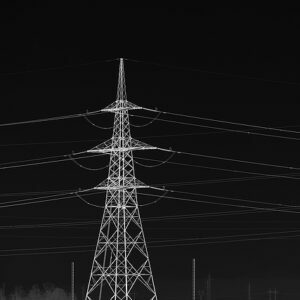In New Hampshire, green activists like Tom Irwin at the Conservation Law Foundation are celebrating the announcement that Merrimack Station, New England’s last operating coal plant, will shut down by 2028.
“It’s a big moment. Coal is the dirtiest form of energy that we have. It’s essential to address the climate crisis that we get off fossil fuels and make that transition to a clean energy economy,” Irwin told NHPR.
But energy experts say New England’s push for green energy is endangering the grid’s reliability and driving up costs. And while the carbon reduction goals may be laudable, they won’t keep the lights on during a harsh New Hampshire winter.
For example, during the brutal freeze of January 2022, there were periods when New England was getting 17 percent of its energy from oil — more than hydro-wind-solar combined. Another key energy source during the extreme weather demand peak?
Merrimack Station.
The debate isn’t over the ability of wind and solar to produce electricity, but rather the reliability of those new sources — particularly during periods of extreme weather. Providers like ISO-New England, which operates the Granite State grid, rely on “base load” power plants such as natural gas, nuclear, or hydroelectric that provide a constant supply of electricity.
“Both wind and solar, they just don’t give you a lot of energy,” Trisha Curtis, chief executive of the consultant group PetroNerds told NHJournal. “They require either a massive base load — you have to have a backup power for when the wind isn’t blowing and the sun isn’t shining either with coal or with natural gas.”
Warnings about potential grid failures are appearing across the U.S.
In Pennsylvania and Ohio, a recent study conducted by Quanta Technolognew warns, “Maintaining adequate [electric] resources will be a challenge for the PJM system in the future when the grid is likely to be operating under abnormal conditions (e.g., extreme weather events).”
In Texas, the inability of the electric grid — heavily reliant on wind power — to deliver power during a winter freeze resulted in hundreds of deaths in 2021. During Christmas 2022, Winter Storm Elliott knocked 90,500 MW worth of power offline unexpectedly for customers along the East Coast.
It’s an issue ISO-NE acknowledged in its 2024 Regional Electricity Outlook report released last month.
“The push to eliminate carbon emissions is driving the electrification of the heating and transportation sectors, which will result in a sharp increase in the region’s demand for electricity just as the grid is incorporating huge amounts of intermittent, weather-dependent resources,” the ISO-NE report said.
In other words, the Biden administration’s push to force Americans into EVs and electric appliances is driving up demand for electricity at the same time EPA emissions policies are pulling production off the grid.
And that, says New Hampshire Department of Energy Commissioner Jared Chicoine, is a flashing red light for Granite State consumers.
“If New Hampshire follows the Massachusetts model of energy policy, Granite Staters will continue to see increasingly unaffordable electric bills and diminished reliability of our electric grid,” Chicoine said. “Our grid operator has shown that New England faces reliability challenges in the next decade.
“Those risks are being driven in large part by the decarbonization and electrification goals of other states, as well as the region’s unwillingness to develop reliable energy infrastructure. We have time to address these issues, but it will take a realistic and responsible approach to energy policy that balances affordability, reliability, and sustainability,” Chicoine added.
The risks are real, experts say.
In the Mid-Atlantic, grid operator PJM warns “the current pace of entry of new generation is insufficient to keep up with expected retirements and increasing load growth, and could threaten system reliability toward the end of this decade,” according to PJM spokesperson Jeffrey Shields.
And an ISO-New England Operational Impact of Extreme Weather Events study found “an increasing energy shortfall risk profile between 2027 and 2032.”
Green activists point across the border to Canada, which has “bet heavily on hydro,” The Wall Street Journal reports, and is now “the third-largest hydroelectricity producer in the world.” The province of Quebec in particular “is hoping to export power to power-hungry U.S. states” like New Hampshire, the WSJ adds.
Only one problem: Recent droughts have slashed Quebec’s hydro output.
“Hydro Quebec has no additional power to sell to New England,” state Rep. Michael Harrington, a former member of New Hampshire’s Public Utilities Commission (PUC) told NHJournal. “In fact, in Ontario, they are planning on building new nuclear plants with the idea of selling some of the output to Quebec.”
State Rep. Michael Vose (R-Epping), chair of the House Science, Technology and Energy Committee, says there are obstacles to the carbon-free agenda that must be faced realistically.
“The ISO-NE report concedes that, ‘At the same time, technology at a scale needed to power the grid solely with carbon-free resources hasn’t arrived yet.’ Therefore, it continues to be true that any such transition will be decades in the making, and risks driving many ordinary Granite Staters into energy poverty.”
Commissioner Chicoine agrees.
“Given current technology, it is simply not possible to meet New England’s electric needs in a reliable, affordable way without dispatchable resources like natural gas,” he said.
“There is a place in our resource mix for renewable energy but we will not be able to keep the lights on without an all-of-the-above approach to energy.”



